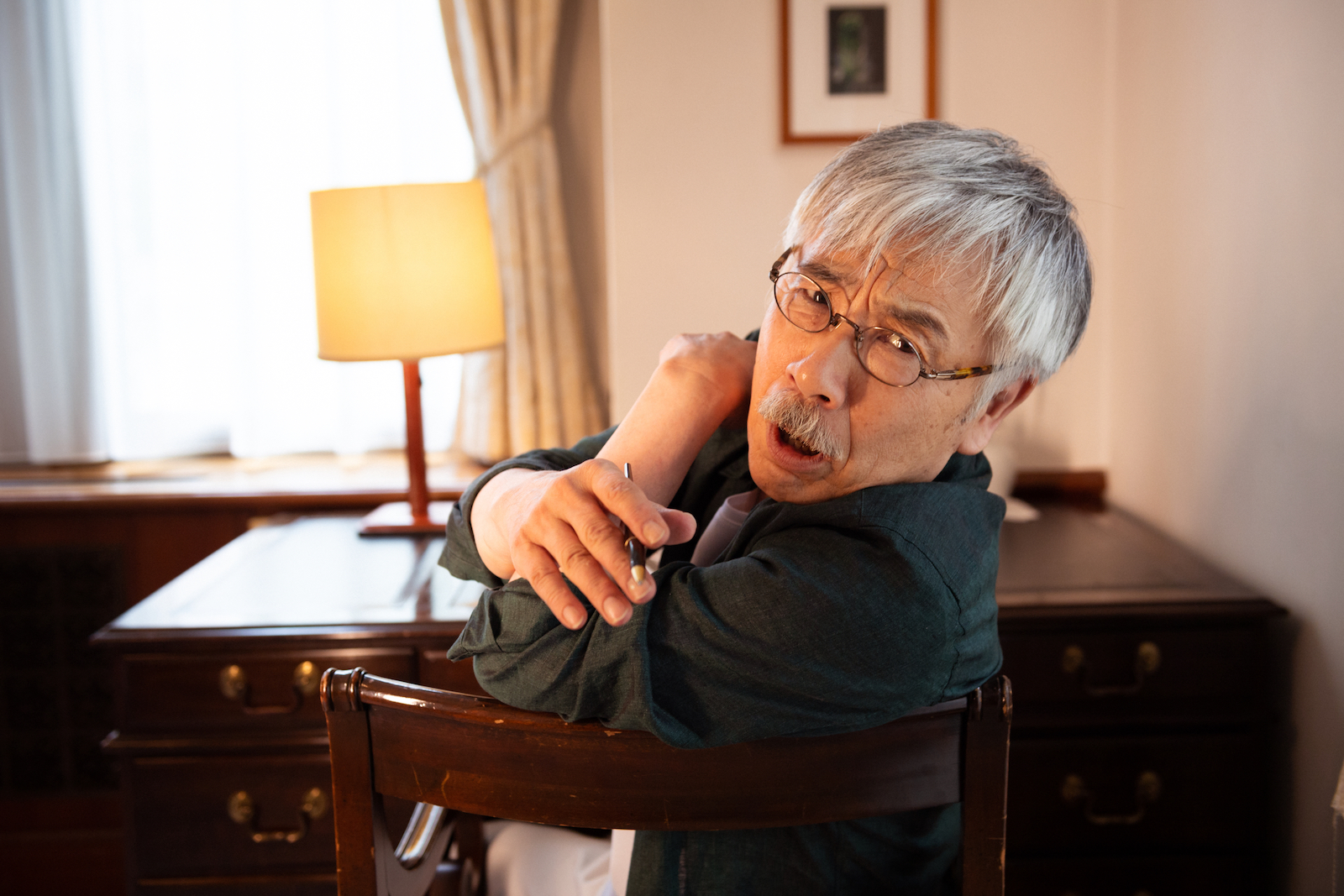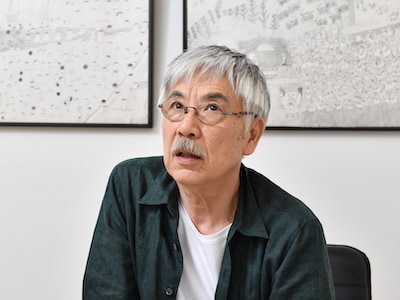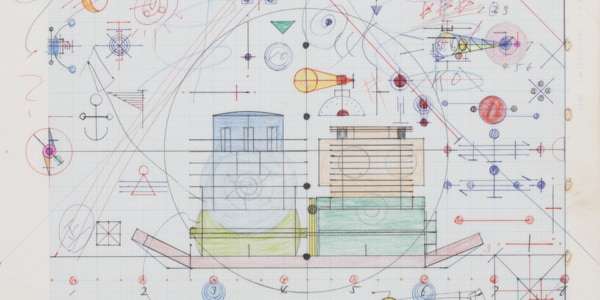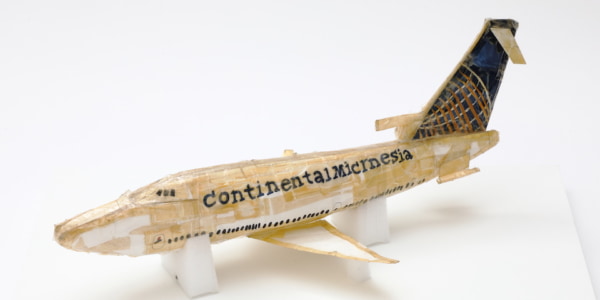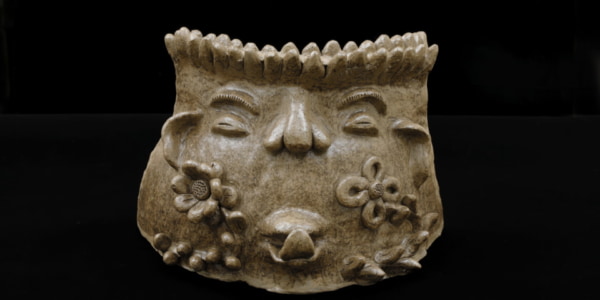Co-starring
TAKAHASHI Kazuhiko
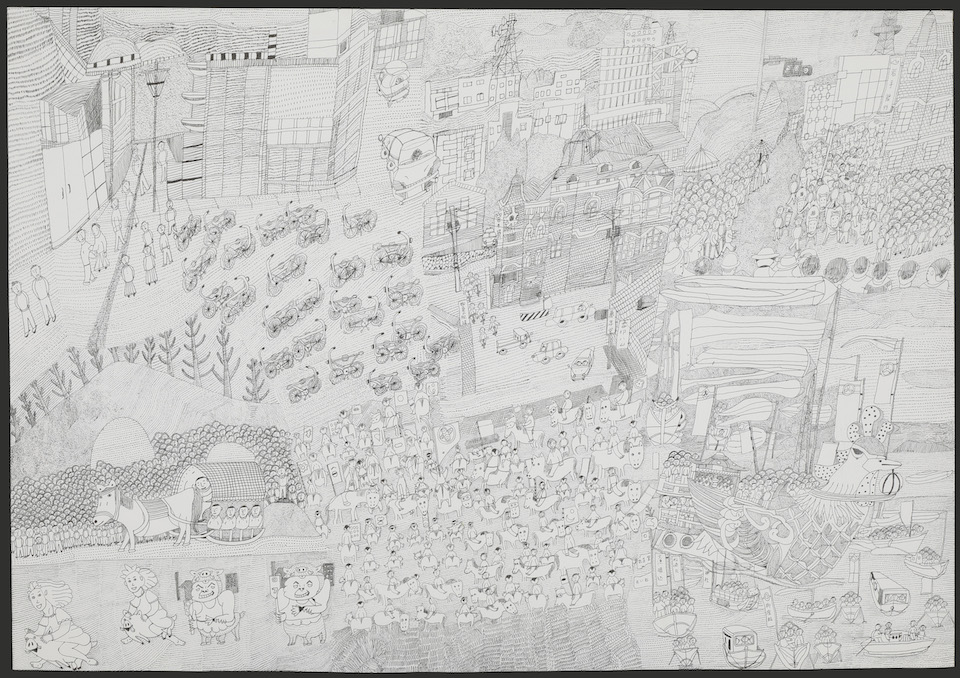
“Where Iwate Bank Is” / 727×1038mm / Water-based pen on paper / 2007 / Collection of The Nippon Foundation
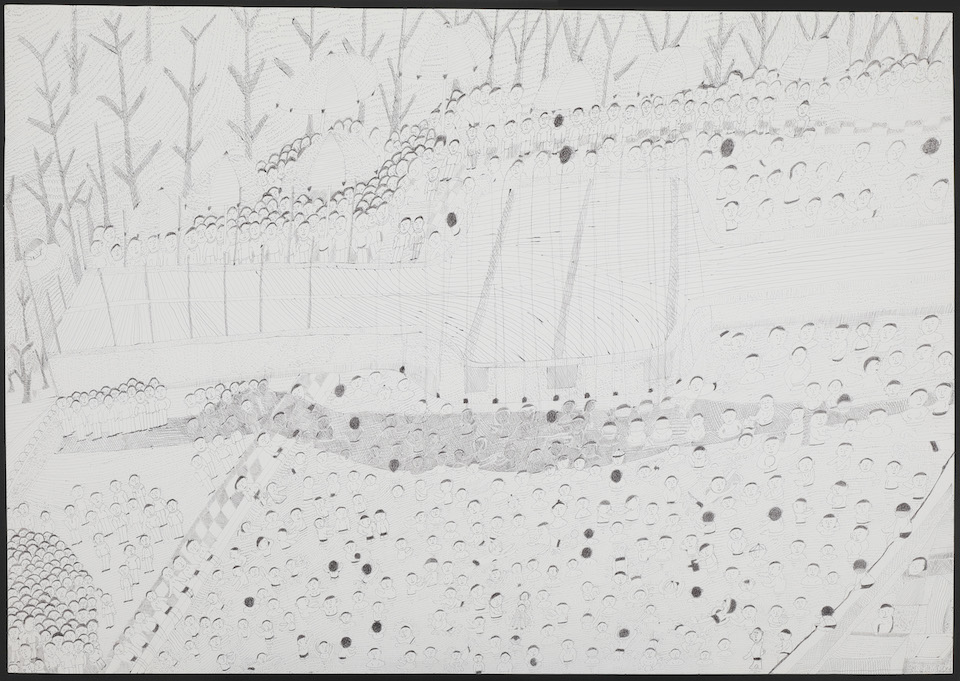
“Pool” / 727×1039mm / Ballpoint pen on paper / 2004 / Collection of The Nippon Foundation
At the end of the festival, everyone goes to get in a giant open-air bath. Everyone’s sweaty, you see. The bath is also like an event in itself, and the people are having fun seeing who else is in the bath. People who want to get in do so as others get out. At this point, the festival is still going on. At any rate, there are a huge number of people here.
There are so many people, and everyone there taking part is happy. The cogency of these two pictures expresses this very strongly. That is what I felt first and foremost.
This all changes abruptly with the next picture, however.
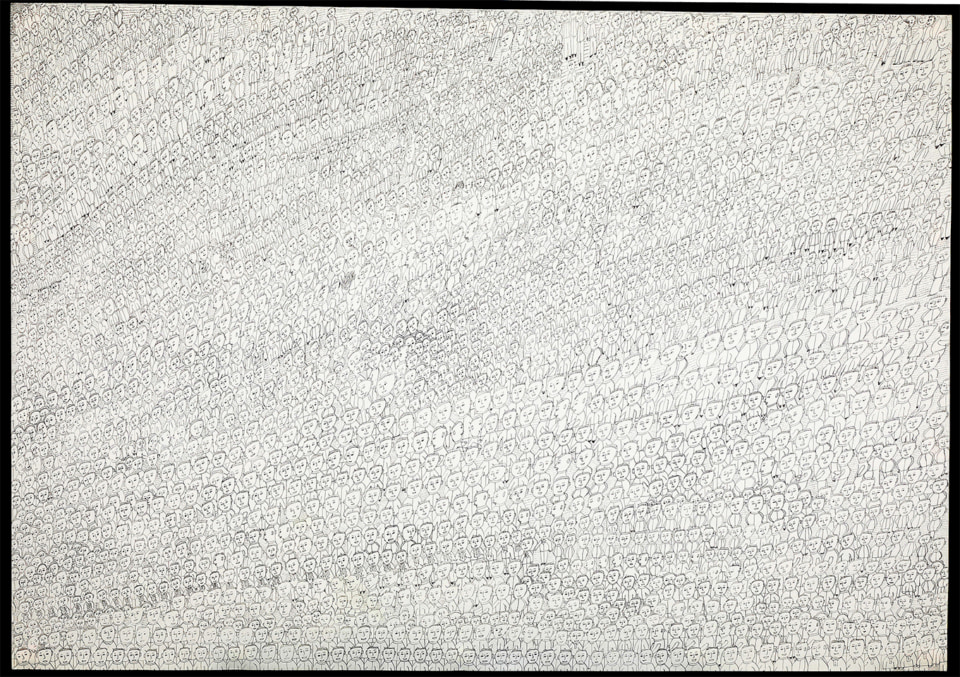
“A Crowd of People” / 729×1034mm / Ballpoint pen on paper / 2006 / Collection of The Nippon Foundation
That picture is this one, depicting the departure of the students to the front. From the happy days just a short while ago, suddenly war has come. The town’s students have been ordered to the front. And the town’s young people are obedient, so every single one of them leaves for the front. They leave for the front with big smiles and their faces filled with hope. The reason why there is not a single gloomy face in the crowd is because they have been told that there is someone threatening their happiness and thus they must fight. Hearing this, I imagine the students would happily lay down their lives.
Then, the next picture is this.
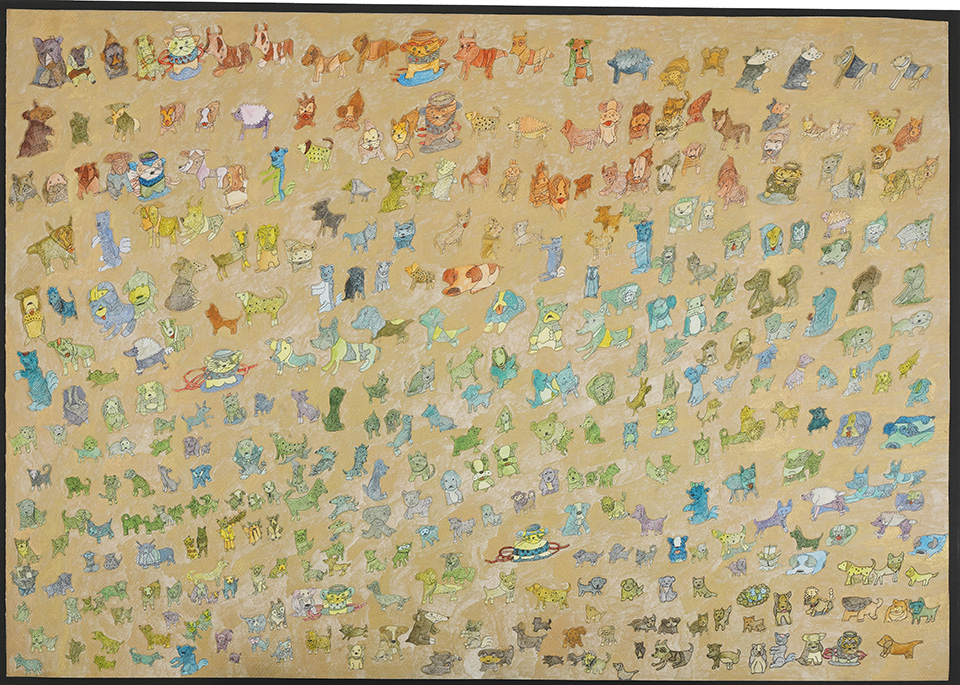
“Dogs” / 727×1036mm / Water-based pen, watercolors on paper / 2005 / Collection of The Nippon Foundation
Even the town’s dogs and cats have been mustered.
In order for the soldiers fighting in the north to survive, the dogs and cats are skinned for their fur. Even the town’s cats and dogs, with such cute and adorable faces, give their lives up for the cause. It seems this actually happened in Japan in the past. Some people even set their pet dogs and cats free in the mountains to hide them.
* * *
And this is where the town’s record ends.
The important thing, however, is the question of what happens after this.
A pitiful fait awaited the dogs and cats called to action, as well as the students sent to the front. If possible, it would be nice to return to peaceful days like the festival in the first picture. Even if we do, however, the same thing could very well happen again. In other words, the question which arises from these pictures is whether this is an eternal recurrence. It asks what we should do in order to avoid that.
We need to think about the big things, not the small, everyday things, and consider what we should do to prevent us from going “there.” These are the kinds of difficult issues which these works thrust upon the viewer.
Some people might say that history repeats itself and it can’t be helped. But it is exactly because history repeats itself that we should think about what needs to be done to keep it from repeating. We need to ask where the crossroads are that will take us away from that.
Everything’s fine up to everyone getting in the bath in the second picture. It’s after here that everything goes wrong. What should we do about the students heading out for the front in the third picture? What if they all don’t smile, and in their heart of hearts, they don’t want to go, and in order to demonstrate their defiance, they don’t show their teeth and everyone keeps a completely blank face? Well, that’s scary in its own way and also leads to a different but also sad fate.
Therefore, I think they shouldn’t line up here in the first place. They should refuse to line up at all. They didn’t come here of their own free will; it was the workings of a system belonging to a massive organization. But despite this, people are made to think it was their decision to come here. This kind of manipulation of what people are thinking is the scariest.
But then there’s the fourth picture with the dogs and cats. They aren’t being mind controlled. Therefore it may surprisingly be they who hold the key to breaking this chain of events. Because if they realize what’s going on is wrong, their owners will realize it, too. I think perhaps that dogs and cats better understand the ghastliness or irrationality of human beings. Human beings, conversely, quickly end up believing and believing in all sorts of things.
Issey Ogata’s Wildly Imaginative Art Appreciation Techniques
As actor, playwright, and director of his one-man show, Issey Ogata brings new worlds to life every day. We asked him for tips on having fun with the power of unfettered imagination.
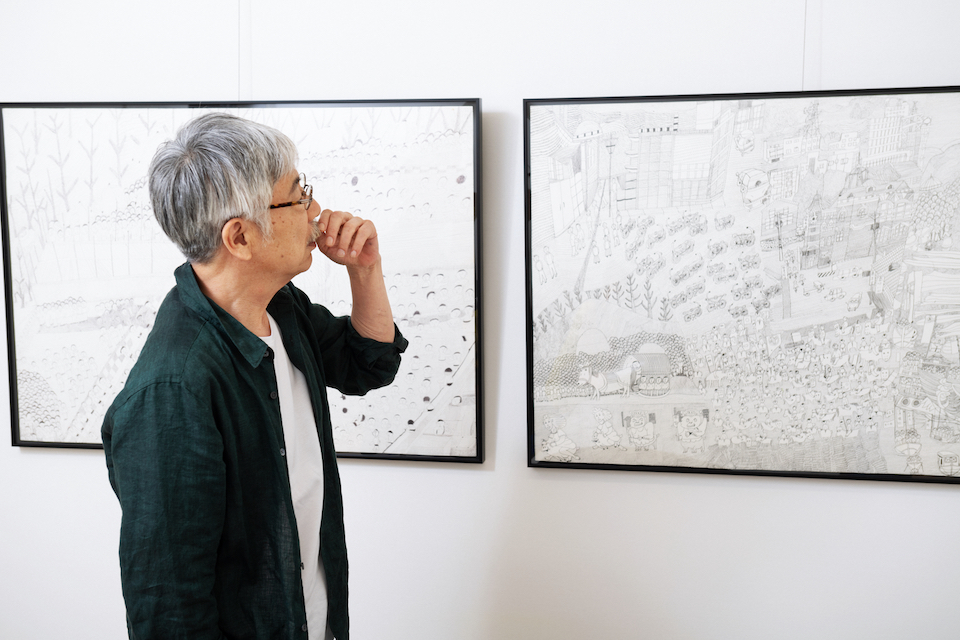
When you look at a picture with unfettered imagination, before you even realize it, the things you know fade away and you begin to experience the “real”
My imagination began running wild with the third work. This picture is the most central, I think. Everyone’s smiling the same smile and facing the same direction. It’s creepy, isn’t it? It wouldn’t be so creepy if everyone was randomly looking in various directions, but because they look as if they have been made to line up in rows, it feels as if they have been forced to follow rules, regulations, and a set way of doing things. There are so many people, none of them are resisting, and everyone is obediently standing in line. I think it’s that obedience which is scary.
Getting and feeling ideas like this is different from the knowledge you get through reading a book. Read a history textbook and you’ll have a vague understanding that Japan once went down the wrong path, but when you look at a picture like this, its cogency hits you differently, impressing on you that the people in the picture smiling like that are students about to be sent to the frontline. This isn’t something you understand through knowledge. Knowledge is different from the “real” you see with your eyes.
Looking at images of the real departure of students for the front which took place in Japan during World War II, even knowing that it’s students marching in those pictures, that’s just knowledge. Conversely, in my unfettered imagination, this picture shows the students leaving for war. And when I look at the picture again based on this idea, my knowledge fades away and the work comes forward. With my knowledge gone, I feel as if I am really there. I am shown that sight first-hand. I believe that cogency is on a whole different level from that of knowledge.
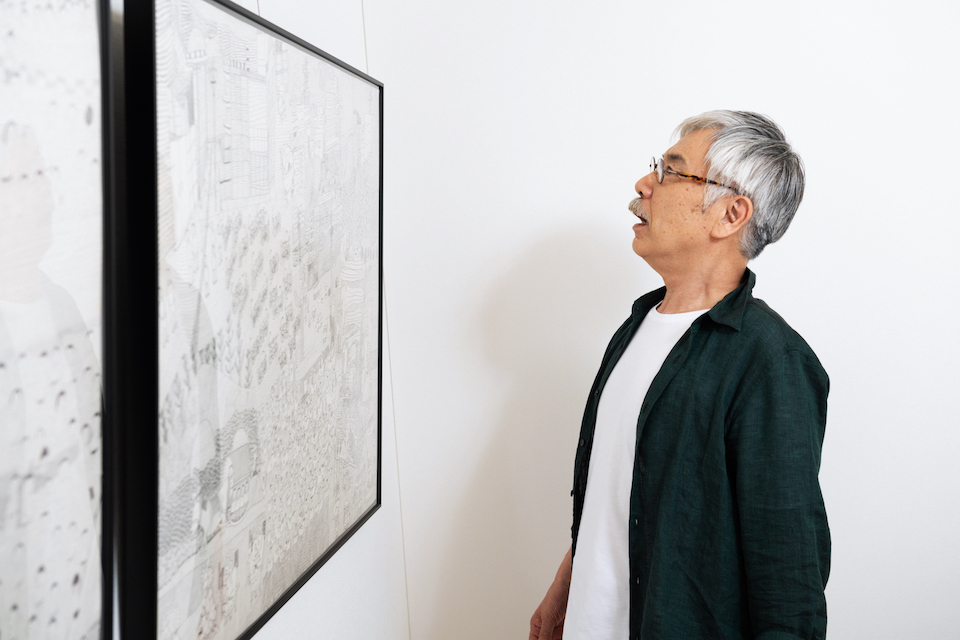
What I’m doing a play, to some extent knowledge is useless. It’s impossible to act through knowledge. Because only real, direct things like heart, or sweat, or this or that feeling will move the audience.
If you read the script of a Shakespearean play, for example, you’ll have knowledge of the plot. One king assassinates another king. The king then becomes filled with fear, but his wife tells him to pull himself together and be a king. If you just try to act in accordance with that knowledge, the audience won’t be moved one bit. If the king, Macbeth, doesn’t actually live on the stage, the audience will not be struck be his actions, they will not think him a fool, and they will not be moved. Knowledge is, of course, necessary, but ultimately it is a question of how far away you can get from knowledge. That is an eternal theme for myself.
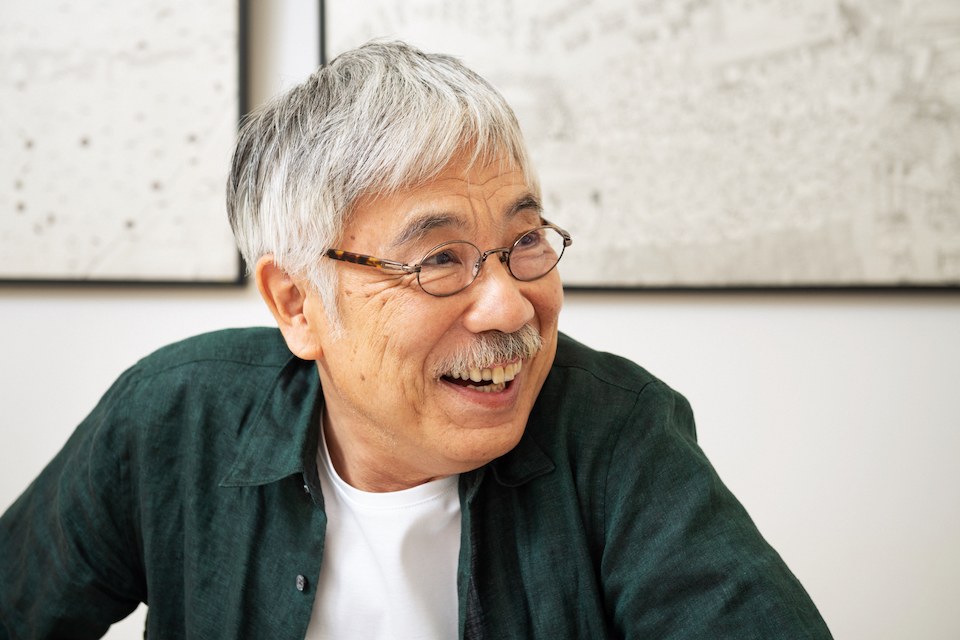
You have to grapple with the image of the character being alive, with the very concept of being alive. You would think there was a method for doing this and yet there is none. Because there is no method which tells you that if you do “this,” you will be able to portray a character as being alive, you must find your own way. After all, the only life you have ever lived is your own, and therefore “this is how I perceive this character as being alive” is something only I can come up with.
I try to keep the same stance when looking at art.
It’s not an issue of whether a given piece of art has “power” or not; it’s “how do I want to see it?” That is my own personal belief. And when you do that, I think you can even call the act of just looking itself as already being an act of unfettered imagination. The desire to grapple with the very concept of being alive is to engage in unfettered imagination. Because there are an infinite number of ways to interpret being alive, and the real world.
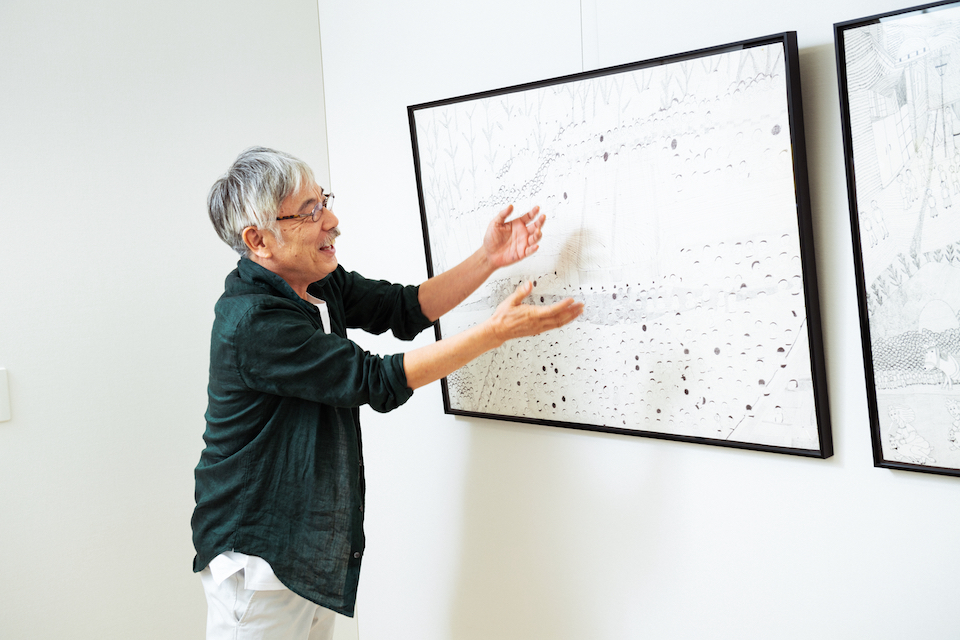
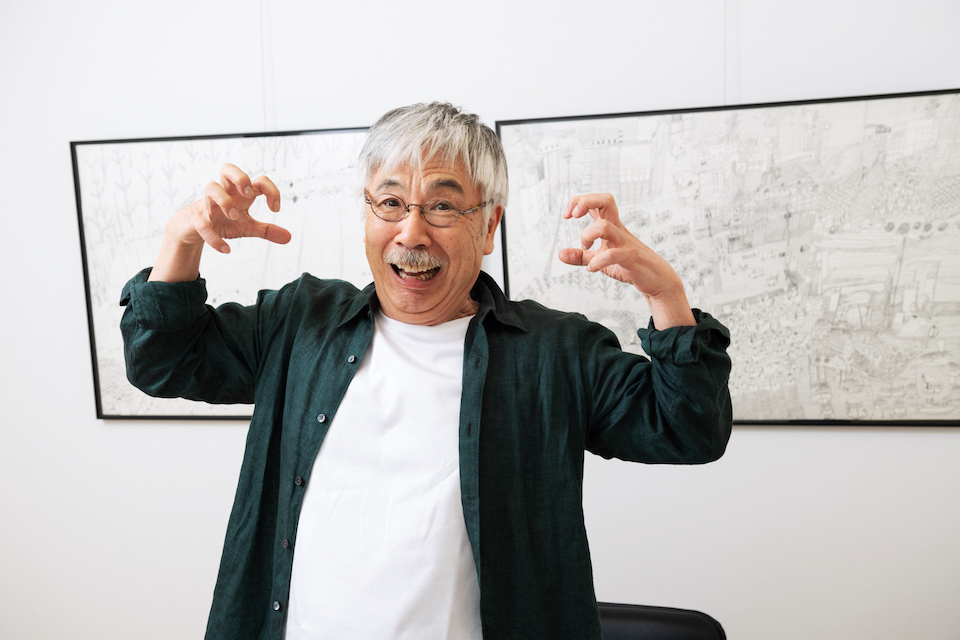
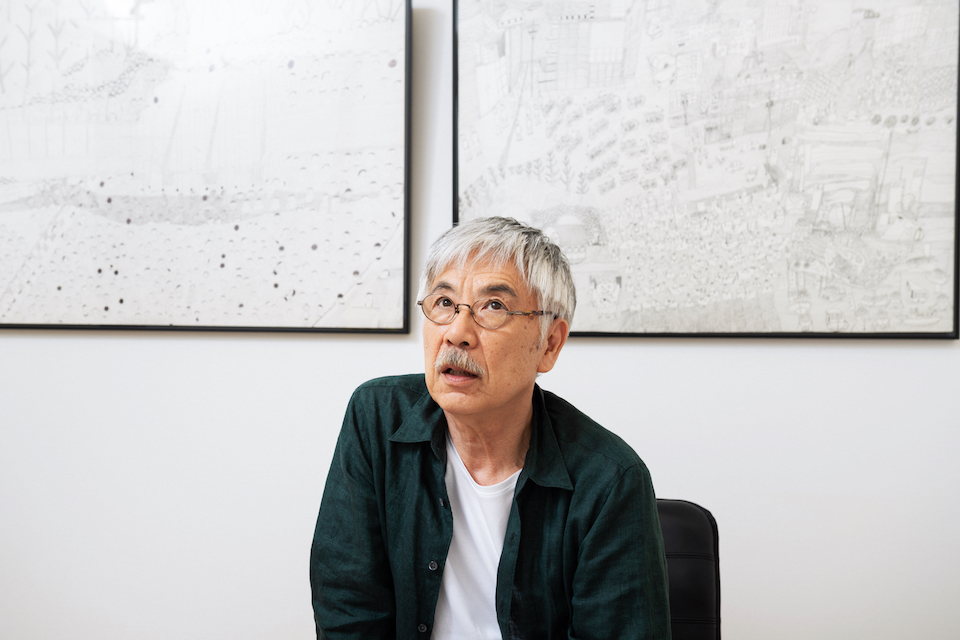
[Corporation] HILLTOP HOTEL




